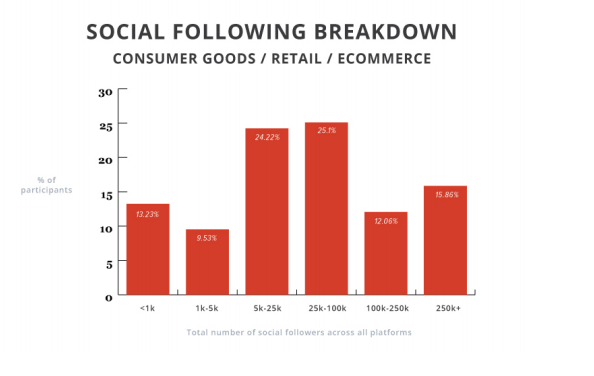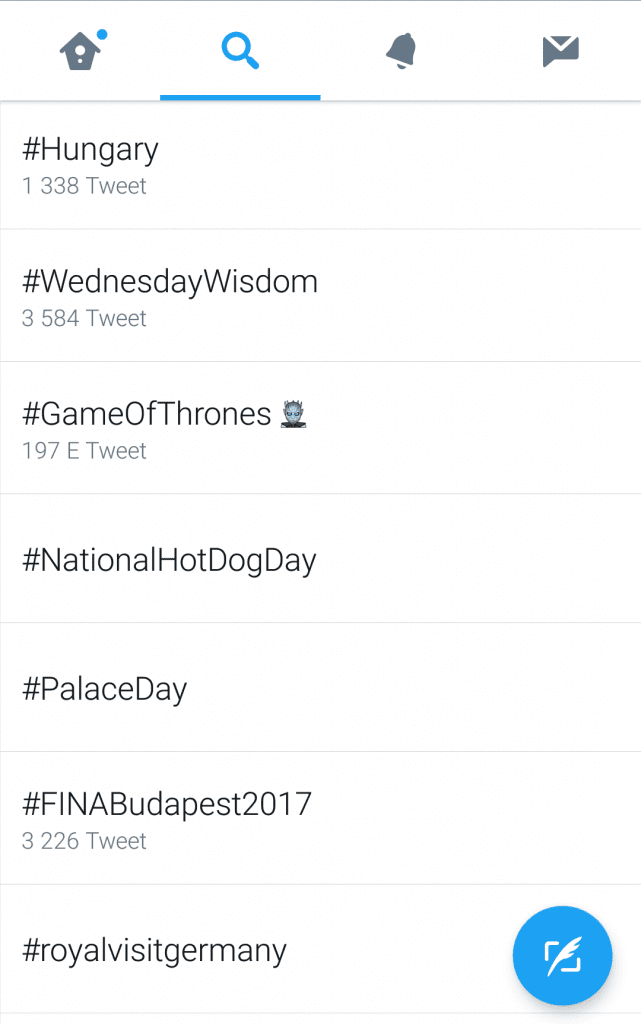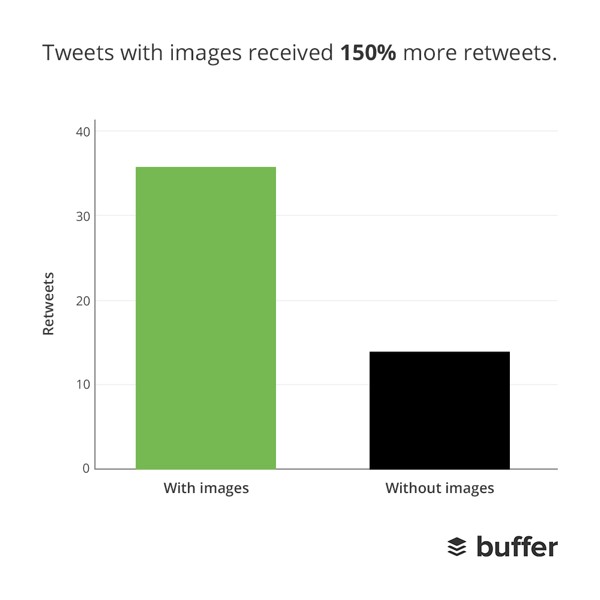- Blog
- How to Drive Traffic to Your Website Using Social Media
How to Drive Traffic to Your Website Using Social Media
-
Nikolett Lorincz
- Marketing
- 6 min read
Table of Contents
You’ve heard it many times:
Social media has an important role in ecommerce.
Today, there are over 4.95 billion social network users around the world. This means you can reach more than half of the global population through social media channels and drive website traffic.
Luckily, starting a new social media account is easy. You don’t need to be a social media guru to do that. But, what happens next?
I’ve heard a lot of ecommerce site owners say that social media didn’t produce the results they expected. They struggle to get likes and shares, and their social media traffic is almost equal to zero.
Not surprisingly, many give up and return their focus to other marketing channels.
I’m here to tell you: Don’t give up on your social media marketing efforts! Sure, there are plenty of other ecommerce stores on social media, and everyone is competing for customers’ attention. But, that shouldn’t hold you back. You just need to learn how to stand out from the crowd.
We designed this guide to help ecommerce stores that don’t have an in-house social media guru. This is a step-by-step guide on how to drive traffic to your website using social media.
OK, let’s jump right in.
A quick overview of the social media channels
First, we’ll take a quick look at the most popular social media channels and their demographics.
Facebook continues to be the most popular and largest social media site with 3 billion monthly users. According to reports, around 7-in-10 U.S. adults use Facebook (68%).
A much smaller number of people report using other social media platforms.
Here’s a list of the top social media
- 2.5 billion monthly active users on YouTube
- 2 billion monthly active users on WhatsApp
- 2 billion monthly active users on Instagram
- 1.2 billion monthly active users on TikTok
- 666 million monthly active users on X (formerly Twitter)
- 465 million monthly active users on Pinterest
- 310 million monthly active users on LinkedIn
Other social media sites that are also worth looking into are WeChat and Snapchat.
Check out this infographic from Tracx. It will give you a pretty nice overview of the usage of social media platforms and where your audience is hiding.

Selfstartr also created an awesome infographic about why brands should embrace Instagram. Here are a few reasons:
- 68% of Instagram users engage with brands, while on Facebook, this number is only 32%.
- Only 36% of marketers use Instagram, which means there is plenty of room left for your brand.
- Instagram can reach followers better than Facebook.
- Business accounts see an average monthly growth of 1.46% Instagram followers.
Alright, that’s enough information to get started.
Let’s keep rolling and look at some of the tactics you can use to drive traffic to your website through social media.
Social media basics
1. Set goals
Before you start posting on your social media channels, set goals.
You need to determine what KPIs (key performance indicators) you want to measure. You can look at likes, the number of followers, audience engagement, and importantly, how much website traffic you drive from each post or each social media channel.
These goals will help you keep track of your social media marketing efforts to see if you’re succeeding or failing.
Then, you can fine-tune your approach and improve.
If you’re a beginner and not sure where to start, check out this benchmark report from HubSpot, it’ll help you choose some basic goals to get started.
According to the report, the consumer goods/retail/ecommerce industry has the second-largest average social media following.

2. Track your KPIs weekly
Now that you have some goals, it’s important to check on them regularly to keep making progress. Start tracking your goals from week to week.
One easy way to do this is to create a Google Sheet or an Excel spreadsheet where you can track your numbers.
Every Monday, start your week by checking your KPIs and analyzing the results. Make some changes and then check to see the impact the following week.
It helps to follow the general rule of A/B testing: don’t make too many changes, or you won’t know what works and what doesn’t.
Make small changes and track the impact of each change to create a winning strategy overall.
3. Know your audience
Knowing your target audience is the key to success with social media marketing.
By knowing your target audience, you will know what appeals to them, how you can stand out from your competitors, and how to simply get noticed in a busy newsfeed.
Customer personas are a great way to tailor your messages towards your ideal audience. To create a persona, you choose from different audience demographics and interests to create a fictional character:
- Age
- Gender
- Education level
- Interest
- Location
- Relationship status
- Goals
- Challenges & pain points they face
- Where they look for information
- Other characteristics
Once you’ve created one or more customer personas, you can conduct research on how to best connect with this audience on social media.
Creating personas also helps you with advertising by improving your targeting with more detailed information.
There’s a saying in marketing: “If you’re talking to everybody, you’re talking to nobody.” And this is 100% true for social media. Define your ideal customers and learn how to connect with them.
4. Know your limits
There’s another very important consideration before you start promoting your business on social media platforms: your available resources.
How many social media accounts can you optimize at once? How many free hours do you have? Do you have the resources to have a dedicated person manage your social media?
Answer these questions before you get started. It’s better to be “awesome” on two social media platforms than be “okay” on five platforms.
If you can’t decide which social media platforms to use, think about your target audience and the research you conducted before.
Use this information to focus your social media marketing efforts where your audience is more likely to be. For a younger audience, look at TikTok, for an older audience, try Facebook.
Optimizing your social media posts
5. Post regularly on social media
Several studies examine how many times you should post on each social media platform.
Usually, these studies say, you shouldn’t post more than once per day on Facebook. LinkedIn is like Facebook, you shouldn’t post more than one or two messages per day.
Unlike the social media platforms mentioned above, Twitter works better if you schedule posts multiple times a day. 10-15 posts per day are usually recommended. Instagram also works best if you post multiple stories a day.
6. Optimize your content for each network
Never share the same message on each network. Never. I’ll say it again, just to make sure: never!
This is where most people fail.
They use a social media automation tool, write one post, and share it on every social network with one single click.
You need to consider the following optimizations:
- Length of your post: For instance, you only have 280 characters on Twitter. You shouldn’t post a “novel” on Instagram either. On Facebook or LinkedIn, you can create longer posts.
- Image size: All social networks have different ideal image sizes and dimensions. Check the requirements and optimize your images for each network.
- Hashtags: On Instagram, hashtags are very popular, and you can use them even more than you would on Twitter.
- Content: Since you’re likely to have different audiences on each network, you should optimize your content too.
7. Use relevant hashtags
Hashtags, which we covered briefly above, are a great way to connect with potential customers based on interest.
Be careful here. You want to use hashtags effectively and you don’t want to overload your followers with tons of hashtags that aren’t relevant to your post.
Moreover, in today’s context, you can also employ hashtags on emerging platforms such as Instagram Threads to enhance engagement and encourage more interactions.
When creating hashtags, see which are popular based on the industry you serve, the products you sell, and the customer personas you’ve created.
You can also check the trending hashtags on Twitter. By default, Twitter shows trending topics based on your location and the people you follow. You can easily change this if you want to connect with people who aren’t in your immediate area.
Here’s a view of trending hashtags from Twitter:

8. Track engagement metrics and website traffic
Generally, you should track your results on social media using the built-in tools available on each social media platform.
For example, Facebook Business Manager and their Page Insights allow you to see detailed information about your audience and engagement per post. Other social media sites offer similar tools.
You should also track the website traffic you’re driving from social media. To be able to track the URLs you post on social media, you have a few options.
You can use a URL shortener, like bit.ly which also lets you see the number of clicks.
Or you can add UTM (Urchin Tracking Module) parameters to your link with the URL Builder tool. It allows you to easily add campaign parameters to URLs so you can track Custom Campaigns in Google Analytics.
All of these options help you better track your results from social media posts.
9. Use visual content
Visuals are an essential part of a social media strategy.
You can see this trend in the image- and video-based platforms like Instagram, TikTok, or Pinterest.
This trend is beginning to impact ecommerce. Now businesses need to think more visually if they want to engage with their target audience.
According to a Buffer study, tweets with images receive 150% more retweets than tweets without images.

Facebook shows similar results. Photos generate much more likes than text-based posts.
Since there are a lot of people posting images on social media, you need to make sure that your image is going to stand out among all the cute kitten and baby photos – tough competition!
When you optimize your images, you should consider a few things:
- Use bold, contrasting colors that match your brand
- Use a minimal amount of text and it’s better to place it on the right side
- Make sure any text is easily readable, even when viewed at a small size
- Use images that elicit emotions
- Use bright, eye-catching images
Emojis are also part of the visual impact you have on social media, so be sure to include some of these in your posts from time to time when appropriate. Like hashtags, be careful to not get carried away with too many emojis.
10. Use paid advertising
Utilizing social media advertising is important for ecommerce stores. With the help of Facebook ads, Promoted Tweets, and other advertising options, you can make the most out of your social media marketing strategy.
By targeting the right audience, you can boost your website traffic significantly and speed up your overall results from social media.
Facebook continuously improves its advertising platform, so it’s worth keeping an eye on the updates and trying them out before your competitors.
Blog optimization
11. Start a blog
An active blog gives you plenty of new content that you can share on social media and helps you drive more website traffic.
A great and well-optimized blog post also helps you rank higher for specific keywords in Google, and it can help you drive sales.
If you’re new to blogging, check out this article to learn more about becoming a powerful blogger. We’ve collected 7 of the most important content marketing lessons we’ve learned after writing hundreds of blog posts.
12. Use tweetable quotes
Creating tweetable quotes in your blog posts helps you to get more shares. In addition, it makes your content more readable.
There are quite a few free tools that you can use for this, see which one you like best.
Creating tweetable quotes in your blog posts helps you to get more shares. Share on X
Communication
14. Build relationships with your followers
This is a very important step. The secret of the most successful companies is that they interact in an authentic way with their followers.
Always take the time to respond to your followers’ comments – even if they might be negative. Don’t make automated messages, interact with each person one-on-one.
Encourage your customers to post about what they bought and comment on their posts.
You can get creative here. Offering a discount on a repeat purchase when someone posts a picture of your product on social media is a great way to boost your social media efforts and increase sales at the same time.
15. Encourage customers to leave a review on Facebook
According to a report, 71% of respondents trust Facebook. That’s why Facebook reviews are an effective social media tool for boosting your business.
Believe it or not, the best way to get reviews is to simply ask for them. Try reaching out to your repeat customers. They will probably have a few nice things to say about you.
If you need some ideas about how to get customer feedback, check out this article.
Tools to use
16. Manage your social media accounts from one place
Using a powerful tool that makes it easier for you to schedule and automate posts to multiple channels from one place is a good idea.
While you want to customize posts for each channel, it’s helpful to see the “big picture” using one piece of software.
There are many social media management and automation tools you can choose from. Check your budget and choose something that you can afford. Don’t worry, you can find tons of free tools as well.
Here are a few options: Hootsuite, Buffer, Sprout Social, dlvr.it, TweetDeck, Tweet Jukebox.
17. Use Google Alerts
Google Alerts is a great way to monitor comments about your brand – not only on social media but all over the Internet.
Monitoring comments with Google Alerts allows you to respond in a timely manner to any feedback, positive or negative. This builds further trust and can also lead to repeat business.
Conclusion
So, what’s next?
It’s time to take action. Grab a pen and paper, or open Google Docs, and start sketching the basics: goals, KPIs, and personas.
And, don’t give up! By planning ahead and focusing on the best social media networks for your business, you can see real results from social media strategy.
Migration has never been easier
We made switching a no-brainer with our free, white-glove onboarding service so you can get started in the blink of an eye.

What should you do next?
Thanks for reading till the end. Here are 4 ways we can help you grow your business:
Boost conversions with proven use cases
Explore our Use Case Library, filled with actionable personalization examples and step-by-step guides to unlock your website's full potential. Check out Use Case Library
Create a free OptiMonk account
Create a free OptiMonk account and easily get started with popups and conversion rate optimization. Get OptiMonk free
Get advice from a CRO expert
Schedule a personalized discovery call with one of our experts to explore how OptiMonk can help you grow your business. Book a demo
Join our weekly newsletter
Real CRO insights & marketing tips. No fluff. Straight to your inbox. Subscribe now
Nikolett Lorincz
- Posted in
- Marketing
Partner with us
- © OptiMonk. All rights reserved!
- Terms of Use
- Privacy Policy
- Cookie Policy
Product updates: January Release 2025









13. Social sharing buttons
The goal of social sharing buttons is the same as using tweetable quotes.
It makes it much easier for your readers to share the content they like with their friends and followers, extending your reach and growing your audience on social media.
Of course, you need to create engaging and shareable content to get shares!